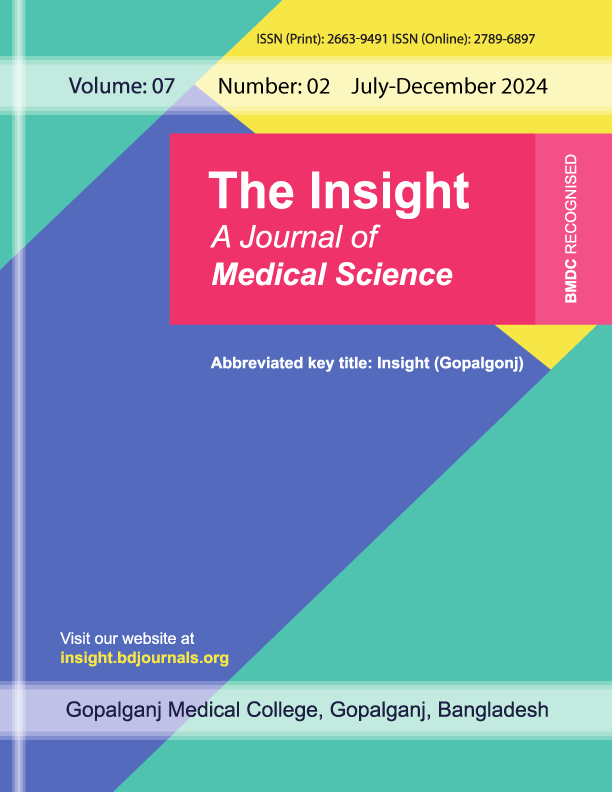Comparative Analysis of Hemodynamic Stability in Off-pump versus On-pump Congenital Heart Surgery - Role of Cardiac Anesthesia
Published 15-07-2025
Keywords
- Hemodynamic Stability,
- Congenital Heart Disease,
- Cardiac Anesthesia
Copyright (c) 2025 The Insight

This work is licensed under a Creative Commons Attribution 4.0 International License.
How to Cite
Abstract
Introduction: Congenital heart disease occurs in about 1 out of every 125 live births, and surgical repair usually requires off-pump or on-pump methods. Selection of either modality has profound effects on hemodynamic stability and perioperative outcomes. This study compared hemodynamic stability indexes between off-pump and on-pump congenital heart surgery operations under uniform cardiac anesthetic protocols. Methods and materials: Prospective observational trial in 150 patients who were undergoing congenital heart surgery, equally divided into off-pump (n=75) and on-pump (n=75) cohorts. Intraoperative and postoperative hemodynamic parameters like stability of heart rate, variability of blood pressure, inotropic supplementation, frequency of arrhythmia, and fluid status were quantified. Statistical analysis was conducted in SPSS v.26 with the help of chi-square tests for categorical variables and multivariate logistic regression for risk factor identification. Results: Off-pump procedures showed greater hemodynamic stability than on-pump, with higher heart rate (73.3% vs 53.3%, p=0.018) and blood pressure stability (80% vs 60%, p=0.012). Off-pump patients required less inotropic support (zero inotrope: 66.7% vs 13.3%, p=0.003) and had fewer arrhythmias (86.7% vs 66.7%, p=0.008). Overall complications were lower (13.3% vs 33.3%, p=0.005), and on-pump surgery increased major complication risk by 3.21 times (p=0.005). Conclusion: Off-pump congenital heart surgery demonstrates improved hemodynamic stability with reduced inotropic requirement, arrhythmias, and complications compared to on-pump surgery. These outcomes warrant preferential usage of off-pump techniques wherever surgically feasible, particularly in high-risk children and neonates.



